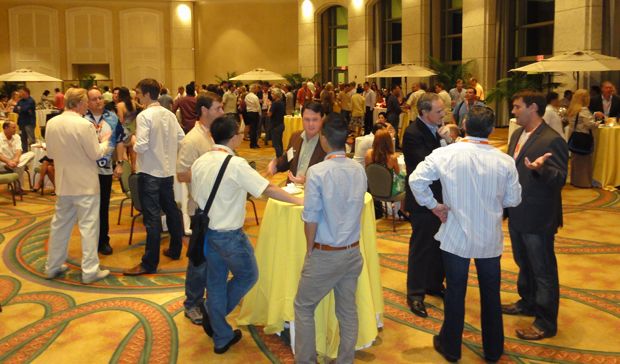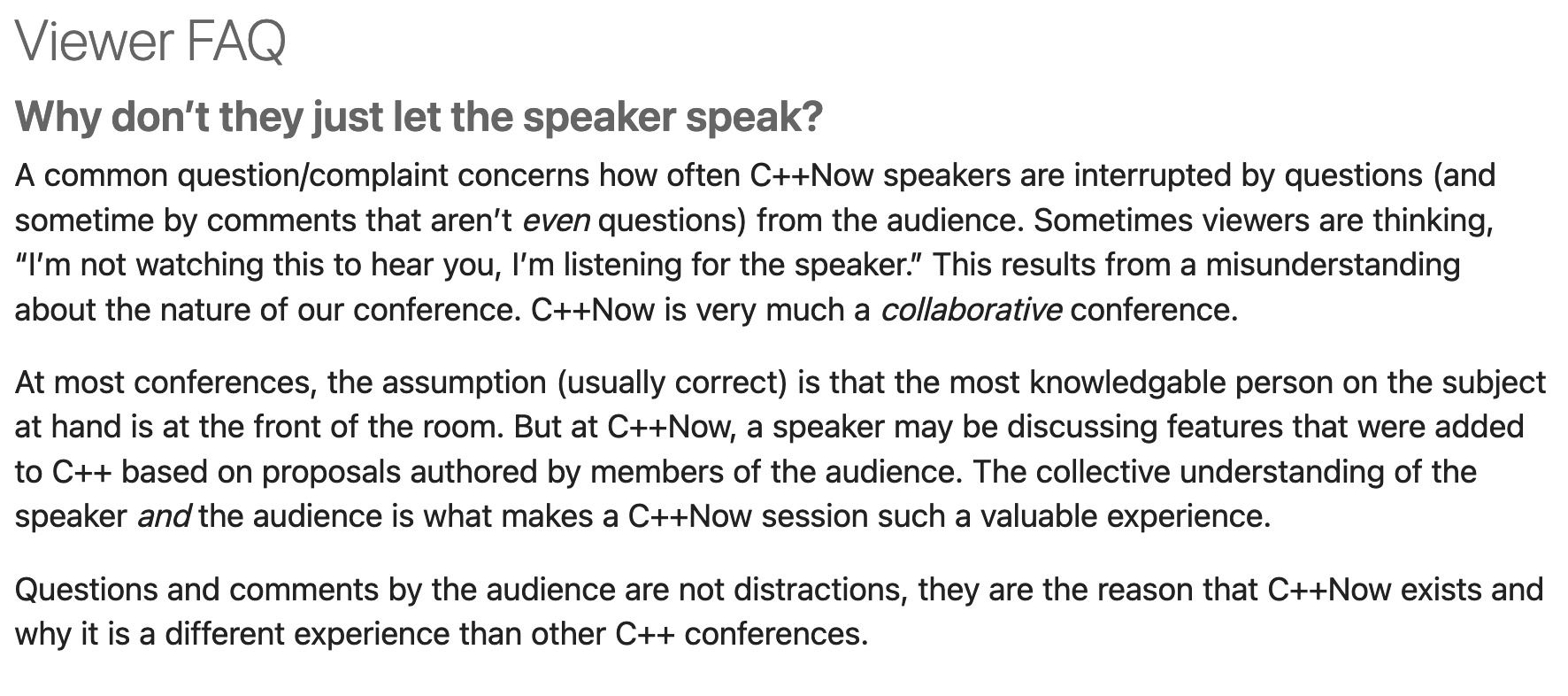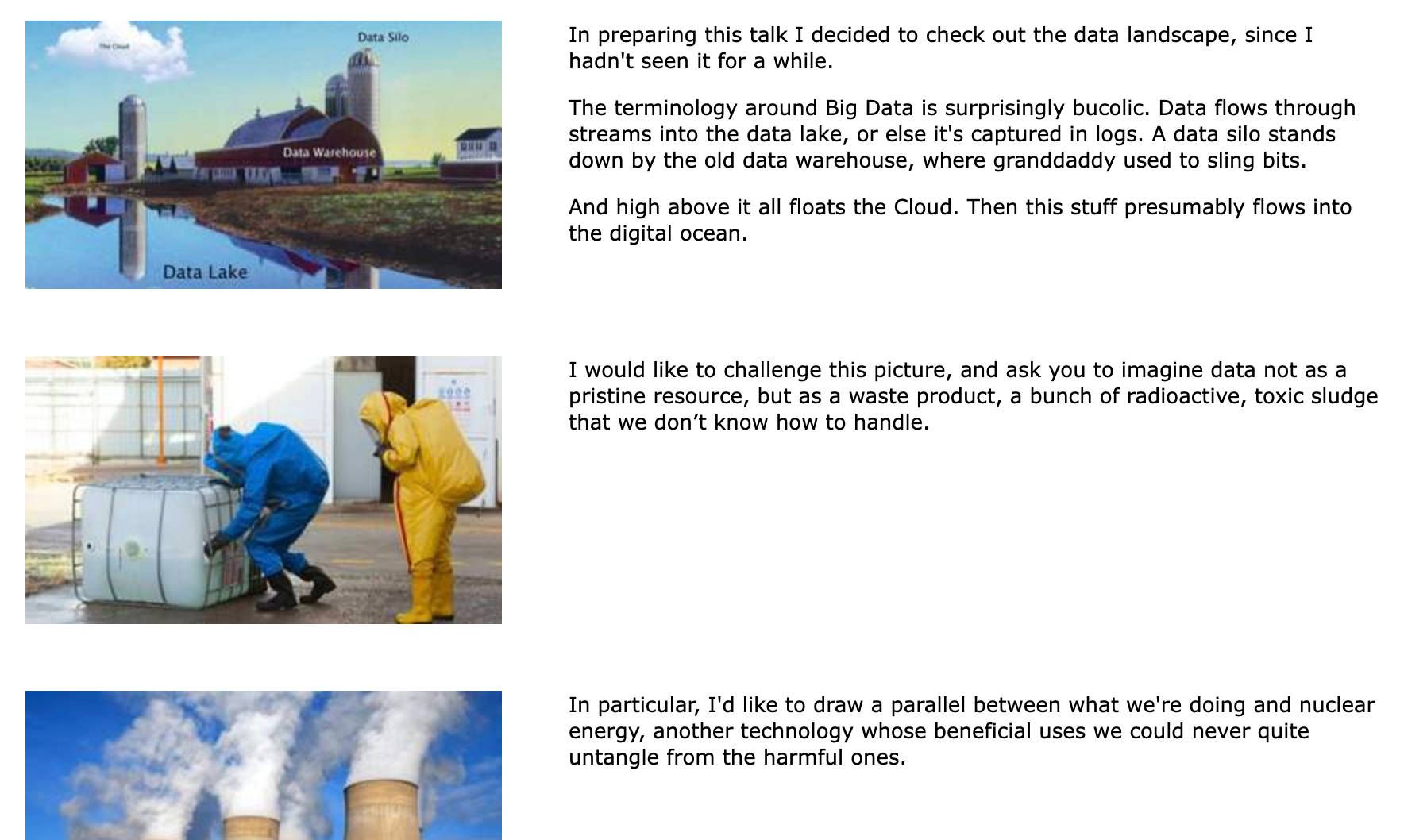Stop publishing conference videos
They’re terrible!
It's incredibly frustrating to try to digest a talk when the video was recording from a camera on a tripod, has attendees walking into frame, and the video is constantly (shakily) switching between the speaker and a washed-out slide deck projected onto a wall. Some conferences and presenters even encourage unprompted audience interaction. This interaction gets lost – we just hear the presenter get interrupted midsentence, stop and stare into the audience, and then we hear an answer with no context1. Recordings distract the organizers and are one of the largest sources of conference execution woes. We should stop this madness.

I firmly believe conferences are about building personal connections while discussing shared interests. The presentations facilitate making these connections, they provide conversation icebreakers for folks to connect during coffee breaks, meals, in the hallway, or during after-events. They’re a sort of non-alcoholic social lubricant. The presentations are not the draw of the conference, they’re a pretext to meet in person and have work pay for it.

I’ve organized conferences and ensuring videos are recorded is a huge cognitive load and it provides little to no value to the people actually attending the conference. Yet those same attendees have to bear the financial costs! High-quality recordings require hiring professionals – recording and editing videos is expensive as it is a high-skill and time-consuming task. Even with professional editing, the videos suffer because it’s still a live recording of content that wasn’t designed for recording.

Prepare publications for the medium they're presented in
You may have read the title and thought I’m advocating for putting up financial barriers and making information more exclusive, but that’s not my goal at all. We should be sharing our research, thoughts, technical achievements, policy positions, etc. as widely as possible – but we should tailor them for the mediums in which they’re distributed. Conference presentations are for conferences.
Before YouTube existed (or allowed videos longer than 10 minutes), folks would upload their slide decks to a file share or SlideShare and claim they published the talk – but the slides are only the visual aid for the presentation. They’re meant to enhance the talk and provide the necessary visual context. Reading someone’s slides feels a lot like watching your airplane neighbor’s movie choice, you can probably piece together the story but wouldn’t it be better if you also had headphones? YouTube gives us the tools to widely distribute audio and visual presentations, but we should do better than uploading conference recordings.
I recognize that tailoring your work for other mediums is more work, but I’d hope the speaker’s motivation to present is to disseminate their work widely and not simply to be the center of attention for an hour or to check a box in search of a job promotion2. Ideally, speakers would be willing to put in a little extra work to make their work more accessible3.
A better way
Ideally, presenters would record and edit their presentations with proper video and audio equipment, perfect lighting, and no interruptions, but obviously, that’s infeasible for most4. As an alternative, I’m a big fan of an “exploded presentation” blog post (my name for it, is there a better name?) where you export all the slides as individual images and you write the spoken commentary alongside the slides. Essentially, you turn an audio-visual presentation into a purely visual one with little additional effort. If you don’t have speaker notes, you can feed your talk through a service such as descript and fix those up5.

You could also write an old fashion blog post or a 30+ tweet Twitter thread.
Ownership
Finally, conferences make a lot of money – hundreds of thousands of dollars of net profit is not uncommon – but many do not compensate speakers in any way. Many will cover an economy flight and a few nights at the conference hotel, but others don’t and even require speakers to buy conference tickets6. If they refuse, those conferences will escort them in and out for their talk only.
The speaker generally creates and owns the content of the presentation. They should get a financial share of their hard work. If conferences don’t offer that, then self-publishing does.
Stop the madness
Stop the madness. Stop publishing conference videos and make your work more accessible.
Footnotes
- Or worse, a conversation starts and the result is “find me after the talk to discuss it” so we suffer through the bad remote experience with no payoff.
- Shouldn’t you be building a new Google Meets app or something instead?
- This includes accessibility for cost reasons but also for other accessibility reasons such as hearing impairments.
- There’s a lot of influencer content out there on how to do this though!
- It would be really neat if someone built a presentation exploder on top of a service like Descript.
- This seems common for industry consortium conferences. An example is FS-ISAC's conference.